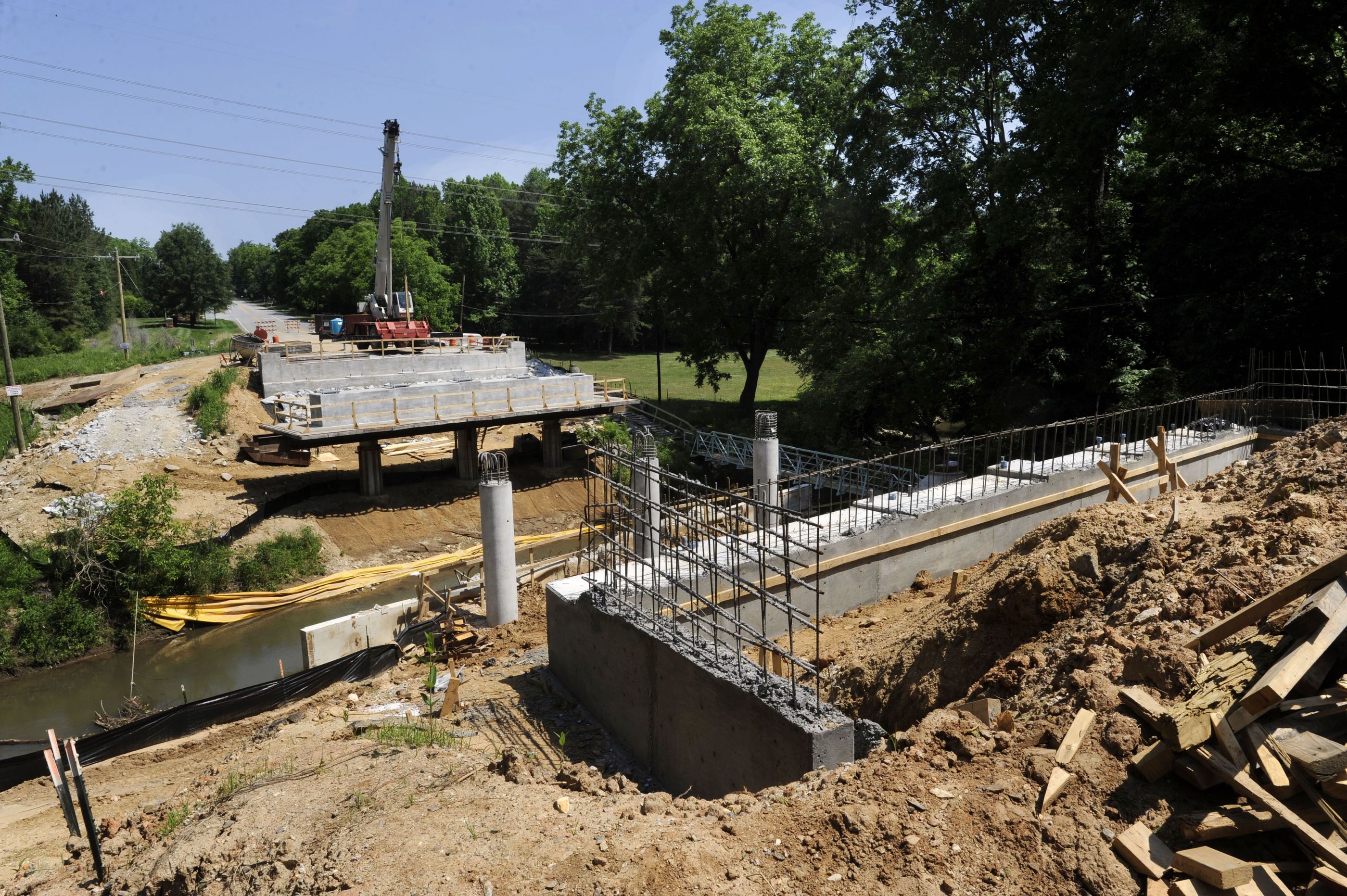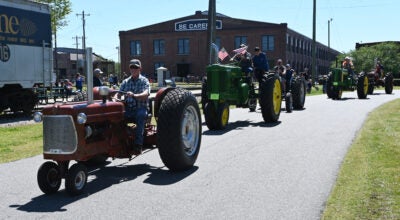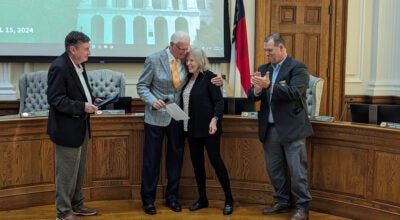Wineka column: Today, the evil of detours; yesterday, the evil of mud
Published 12:00 am Wednesday, May 28, 2014
SALISBURY — Back in March, I shared my fears of a government-perpetrated, “Under the Dome”-type of apocalypse caused by all the recent road closures.
With each new road under construction, bridge replacement and detour, I argued then, someone is trying to cut us off from the outside world. All the motorists you see on Salisbury’s streets and highways are actually driving from one barricade to the next, like zombies caught in a continuous detour loop from which they can’t escape.
My conspiracy theories have only become stronger with the recent Department of Transportation actions choking off portions of Faith Road for five months and Old Concord Road until June 20.
These two roads are, of course, good ways in and out of Salisbury, so the noose keeps tightening.
I rant, so I can bring you a history lesson.
Awhile back, historian Susan Sides sent me a skinny, nicely bound reference book, published by the state in 1914, about the two days Gov. Locke Craig set aside in 1913 as “Good Roads Days” in North Carolina.
Craig proclaimed Nov. 5 and 6, 1913, as state holidays, in which every able-bodied adult was supposed to volunteer to work on streets and roads in his community.
Think of a giant, two-day United Way Day of Caring whose sole purpose was to improve the roads, which by most accounts were a muddy — even evil — mess and strangling North Carolina’s economic development efforts.
Here’s some of what Gov. Craig said in his Sept. 27, 1914, proclamation:
“… I call upon every able-bodied man to shoulder his shovel and march out and strike a blow for progress.
“Let the farmer, the merchant, the lawyer, the doctor, the minister of the gospel, the rich and the poor, and the men of all walks of life enlist as volunteers in this mighty army for grand accomplishment.
“Let no man be above this work, nor forget his duty to himself and to his neighbors. It will be an honor to every man on these days to labor with his fellow man, to banish from the country the curse of bad roads and the evils that accompany them.”
Craig said North Carolina was losing, “according to reliable estimate, $12 million annually on account of bad roads — this vast sum paid as a tribute to mud.”
He called on mayors, county commissioners, farmers, chambers of commerce, newspapers, good roads associations, schools, boards of trades and civic organizations for their help.
Craig also asked women to participate, though he used words women would find patronizing today.
“In every hour of danger,” the governor said, “they have inspired the men of North Carolina with faith and courage. … They can provide good things to eat, and decorate every worker with a badge of honor.”
The duty of organizing this grand plan fell to Joseph Hyde Pratt, the state geologist. He started with civil and road engineers, road superintendents and foremen in the state’s counties and instructed them to form teams of 10, each with a captain.
Pratt suggested they assemble as many “road machines, drags and scrapes” as they could, and he set out what the male volunteer laborers should have:
“The equipment required will be wheelbarrows, picks, axes, mattocks, shovels, crowbars, plows and teams.”
At the time, Rowan County was considered among the leaders of the Good Roads movement, and P.B. Beard of Salisbury served as president of the Rowan County Good Roads Association and one of the county’s delegates to the State Good Roads Association, for which Pratt was the secretary.
On the first day of Good Roads Days, Nov. 5, 1913, Salisbury Mayor Walter H. Woodson won praise from the Salisbury Evening Post for his work.
“Being the head of city government, he went into the ditch today with the humblest man of the city and did a man’s share of real hard work,” the newspaper said.
An attorney, Woodson wore overalls and brandished a pick, staying on the street jobs all day. Work occurred on Liberty, Ellis and Church streets.
Livingstone College students, instructors and administrators worked on streets in the neighborhood of the college. But the Post also reported that turnout wasn’t so great that first day.
“The most of us did not take the matter seriously in a personal way,” the newspaper said, “but it is expected and hoped that tomorrow will bring a larger number.”
What happened overall in Rowan County might best be represented in a Dec. 14, 1913, letter to Pratt from J.H. Warburton, secretary of the Salisbury Industrial Club.
Warburton put the number of men who worked over the two days at 550 in Rowan County, translating to the equivalent of 1,100 work days. Three miles of sand-clay road were built, 10 miles were scraped and graded, and three miles of new road were constructed.
Warburton said much of the other work accomplished was not formally given to him in report form. “Four or five city blocks of Salisbury street were put in good condition,” he told Pratt, “and there were a good many farmers over the county who worked here and there without any organization.”
Rowan County commissioners took the days seriously and offered $1,000 in prize money, going to townships that did the most — and best — work.
Unity Township won the $500 prize; Cleveland Township, $300; and Franklin Township, $200.
Franklin Township built, for example, a mile-and-a-half “of good sand-clay road, and Mr. Will Hall has agreed to keep it in good repair,” Warburton said.
Hall, who had 92 men working on his team, won a gold watch from Leonard’s Jewelry and the Rowan County Good Roads Association.
In his 1914 reference book, Pratt gave some summaries from various counties on the work accomplished during Good Roads Days, but never any overall totals for the state.
The Charlotte Chronicle put the number of volunteers working on roads at 100,000 and predicted twice that number were now ready to make North Carolina a good roads state.
The News and Observer in Raleigh concluded editorially, “What has been done is excellent. Let us keep at it till all of North Carolina is linked together with good roads.”
So here we are — 100 years later — broken, unlinked and driving from detour to detour under our dome of road and bridge construction.
We really need the governor to declare “Good Roads Days” again and bring us zombies home.
Contact Mark Wineka at 704-797-4263, or mwineka@salisburypost.com.





